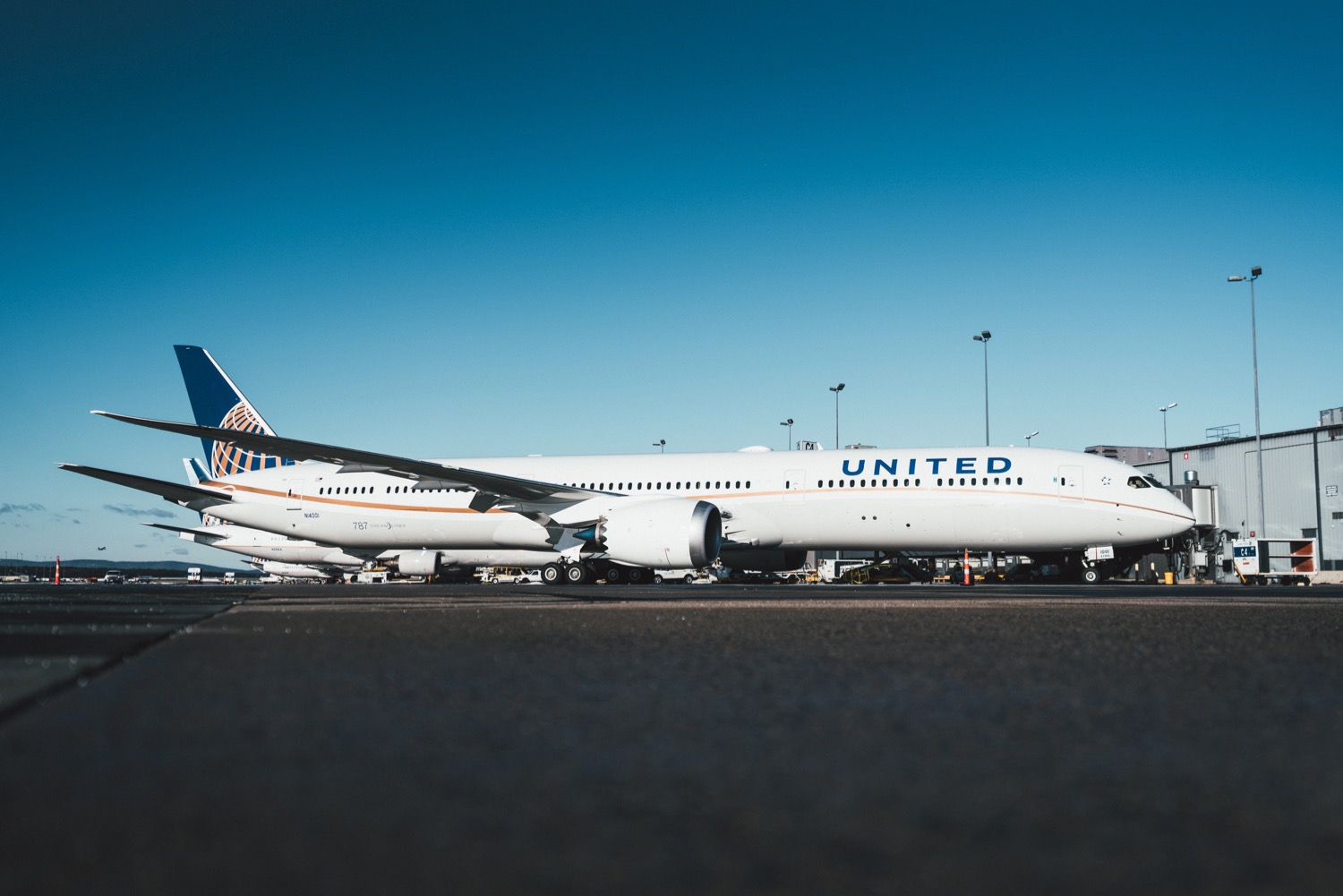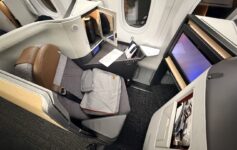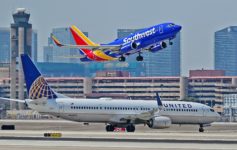Just what is a “Scott Kirby Retrofit”? Is that configuring a 767-300 with a staggering number of business class seats or squeezing more passengers onto a 787-8?
My friend Gary from View from the Wing wrote a story yesterday entitled, “Leaked Seat Maps Show United’s 787s Are Getting A Scott Kirby Retrofit.”
Working off seat maps which reveal how United will potentially reconfigure its 787-8 and 787-9 aircraft, we see a number of concerning trends.
Introducing @united Polaris equipped 787-8/9 configs.
Comings to a city near you in 2020.#B787 #UnitedAirlines pic.twitter.com/VTpI1Wh8OC— LAflyer (@LAflyr) December 12, 2019
On the 787-8:
- Polaris (business class) will drop from 36 to 28 seats
- 21 Premium Plus (premium economy) will be added
- Economy Plus (extra legroom economy) will drop from 70 t0 36
- United Economy will grow from 113 to 158 seats with a potential decrease in legroom
In total, the 787-8 will carry 243 passengers versus 219 presently.
On the 787-9:
- Polaris maintained at 48 seats
- 21 Premium Plus seats will be added
- Economy Plus drops from 88 seats to 42 seats
- Economy grows from 116 to 146
In total, the 787-9 will carry 257 passengers versus 252 presently.
That’s bad news for economy class flyers and for MileagePlus elites who fly economy class and previously enjoyed easier access to Economy Plus.
But contrast these retrofits to a subfleet of 767-300s, in which United has dramatically enlarged business class and added premium economy to an extent unparalleled by any of its domestic competition.
These 767-300ER feature:
- 46 United Polaris seats
- 22 United Premium Plus seats
- 99 United Economy Seats
That represents a huge growth in premium seats that came directly at the expense of economy class. One common trend we see is that Economy Plus is being sacrificed…”Kirbyed” if you will. But let’s not label Kirby as destroyer of premium cabins.
> Read More: United Dramatically Enlarges Business Class Cabin On 767-300
A Bifurcated United Fleet
What do we make of United’s fleet strategy? It seems very simple to me: different aircraft for different markets.
High-density 777s or soon-to-be-higher-density 787-8s are perfect for leisure and secondary markets that cannot sustain high premium demand or business travel. Think Tahiti or Hawaii. Think seasonal summer service to select destinations in Europe.
Please note, I’m not defending these changes at all. In fact, if the seat maps above are accurate, I think it is a shame that United is choosing to make its longhaul economy class product even less comfortable.
But let’s not blame every cut on Kirby if we are also not going to note that he has added business class to the 767-300 and maintained it on the 777-200 and 777-300, which make up a sizeable chunk of the UA longhaul fleet.
Time will tell if this is a wise course of action, but it is a complex strategy, not a mindless desire to shaft passengers.
CONCLUSION
As the UA fleet becomes more nimble and United’s flight planning team is able to make adjustments on a short-term basis to schedules based upon demand, the bifurcated premium-heavy and leisure-heavy fleet will be instrumental in responding to unique market conditions.
No one should celebrate more seats being squeezed into economy class. I also agree that these changes have Kirby’s name written all over it. But let’s not forget the balance: we’ve seen more domestic and international premium seats plus Polaris Lounges under Kirby. It’s not all bad news.
> Read More: United Massively Increases Premium Cabins Across Fleet
> Reed More: Scott Kirby, New United CEO, Has Earned My Respect





“we’ve seen more domestic and international premium seats plus Polaris Lounges under Kirby.”
We’re getting an IAD Polaris lounge, sure. But want to bet we never see NRT (‘with the shift to Haneda…’) or HKG (‘with weakness there due to protests…’)?
We certainly haven’t see Polaris lounges *expand* under Kirby.
Hey Matthew, nice counterpoint. I’m not nearly as dire about Kirby as others in the blogosphere are. Considering United’s current arch vs 8-10 years ago it’s an US airline that has product worth flying.
Kirby is a smart man. As an airline employee I’m happy people like him are at the helm. I hope we have strong financial stability , not empty business class cabins.
@Ryan I hope the govt. ends its support for the legacy airlines’ oligopoly so they and their overpaid, lazy-ass unions actually have to work for a living
https://www.economist.com/leaders/2017/04/22/a-lack-of-competition-explains-the-flaws-in-american-aviation
It’s probably Kirby, but it honestly makes sense – having Y+ make up 40% of the Y cabin makes little sense to begin with (I’d bet they average 20-30% of those Y+ seats being assigned at the airport to those with no status who need a seat), and Premium Plus will likely cannibalize the Y+ section further.
That was my thought as well, that the competition for Economy Plus seating will go down because more people upgrading to Premium Plus. Maybe some Silver members lose out on the last minute seat grab…but it’s not as draconian a cut as described.
As other comments have said the E to E+ always seemed high, the problem as rightly identified by gary is the lack of toilets, all over the plane.
At least 1 lav needs to go back in the back of the plane, if not more
But United has disputed they are removing toilets, which is why I left that part out.
Because the US majors pretty much killed loyalty for me with their ‘enhancements’ over the last few years, why settle for at best, mediocre product and service? United can move around the deck chairs all they want, but when I drop $8K on a biz ticket, I have expectations for service and product that any number of European or Asian carriers are able to provide.
I think the E+ cuts are smart but they may have taken it too far. It should be about 33% of the entire Y cabin instead of ~25%. Having 40-45% was too much IMO as I’ve taken flights where everyone in E+ had empty middle while E- was full.
Maybe it’s the Californian in you, but your version is much less hateful and spite-filled than your buddy’s.
Your actual analysis and measured opinion are why I keep reading your stuff.
Thank you for reading!
The point guy pointed out that United is planning to remove the mid section lav to add more seats and all the economy lavs are to be added at the back. So increase in economy seats and reducing lavs means very long lines on the aisles. So might as well Kirby add a fine print “to wear adult diapers” on the contract of carriage.
I think the two US airways rejects continue to ruin AA and United. The fed govt should let these two collapse without giving them any concessions.
Thanks for the update Matthew! I fly 12 ultra longhaul flights a year (15+ hours). I exclusively used to fly my ultra-longhaul flights on UA Economy Plus. It was relatively comfortable with the 3-3-3 configuration and good amount of headroom. I always paid extra for these flights vs. other foreign carriers. Earlier in 2019, they switched the configuration to 3-4-3. Very uncomfortable with no shoulder room for such long flights. I tried out the new configuration a few times and then stopped flying UA completely for ultra-longhaul because it was simply too uncomfortable. Instead, I have switched to Singapore Premium economy for the same price as my old economy seat on UA and couldn’t be happier.
Correct me if I’m wrong here, but isn’t United’s “more premium seating” for smaller domestic jets basically due to labor constraints? If so, that pretty much kills off that part of that argument. Of course, I think Kirby should be required to sit with his family in regular economy seats for at least 10 hours a week. Or just have a regular economy seat with 30″ leg room as his desk chair. At that point, if he’s okay with the seating then humans should be as well.
I was thinking of the A319 versus the CRJ-550. The latter is certainly to circumvent the scope clause, but the addition of four first class seats on the A319 is very un-Kirby-like.